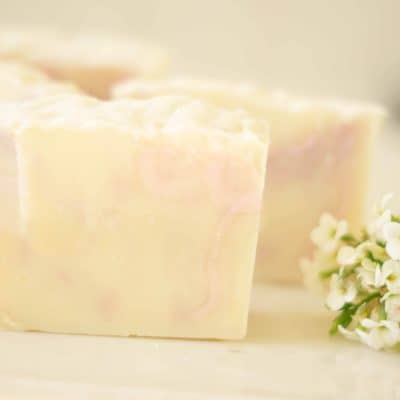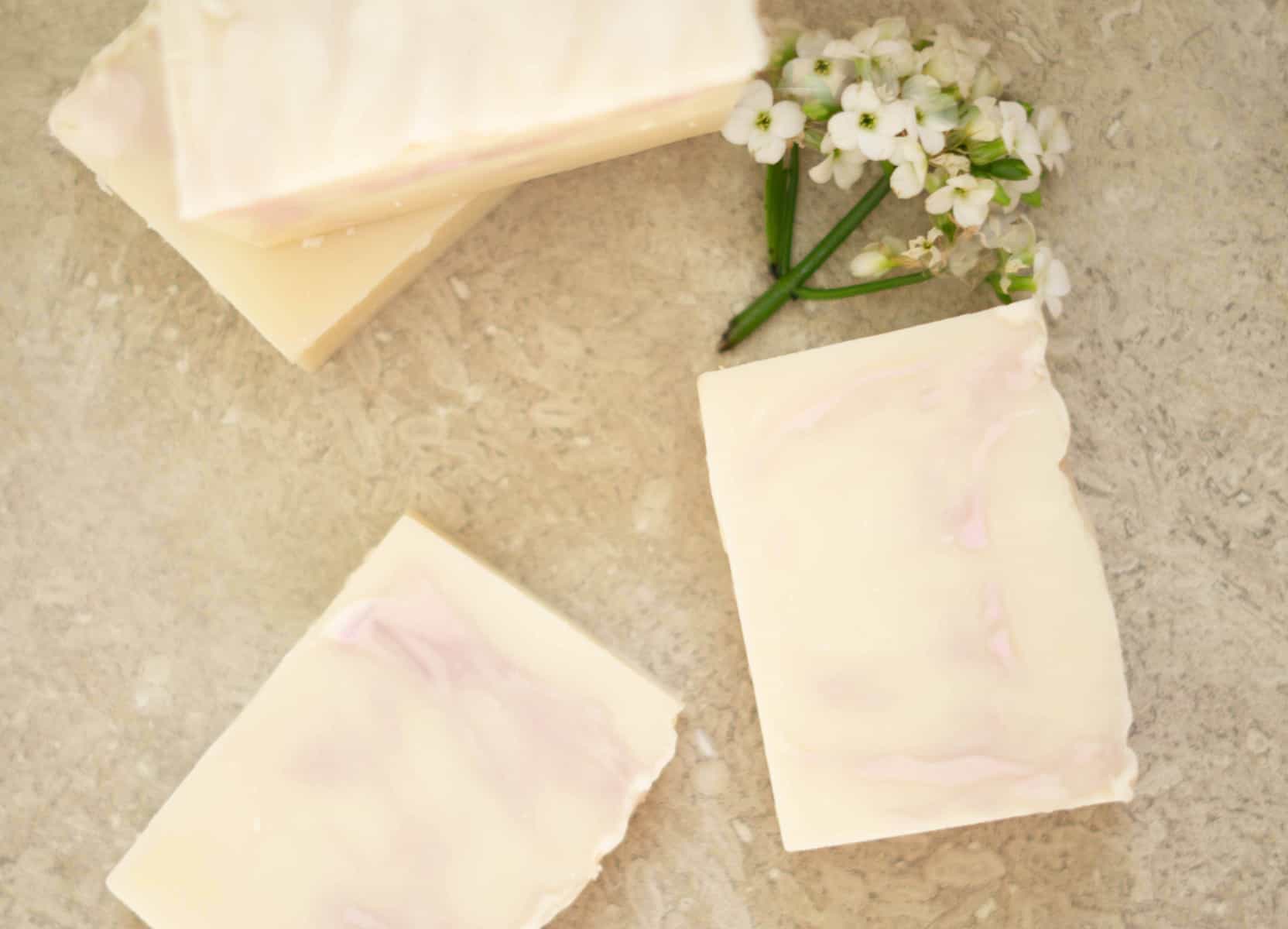How to Make Mango Butter Soap for Nourished Skin
Honestly, who can resist something called mango butter soap? It’s just delightful sounding. Luckily, it is also one of the greatest soaps of all time, perfect for the shower or as a hand soap.
This is one of my most popular cold-process soap recipes because it’s nourishing and luxurious without using too many oils.
Mango Butter Soap Recipe

Equipment
- Safety equipment
- containers
- Large pot
Ingredients
- 4.94 ounces lye
- 9-12 ounces water
- 3.5 ounces avocado oil
- 9.625 ounces coconut oil
- 9.625 ounces palm oil
- 8.75 ounces olive oil
- 3.5 ounces mango butter
- 3 tablespoons mango mango fragrance oil
Save This Recipe
You'll join my email list which you will love. And if you don't, unsubscribe in one click. ❤️
Instructions
- Using a digital scale, weigh your water and lye in separate containers. Add the lye to the water (SNOW FLOATS ON THE LAKE), and stir until dissolved. It will shoot up in temperature. Set your lye water in a safe place, marked as poison.
- Using your digital scale, weigh your oils and butters and put them in a large pot. Melt over low heat until they reach 140 degrees.
- Allow your lye water and oils to cool to 100-120 degrees. They should be within ten degrees of each other.
- Prepare your mold, color, and fragrance before blending. When you are ready, pour your lye water into your oil pot and blend using a stick blender. You are looking for "trace", which means your ingredients have combined into a soap batter. You will see no visible oil spots, the mixture will appear somewhat opaque, and if you lift your stick blender, a trail of batter will sit on top of the liquid instead of immediately sinking in. When the trace is reached, stop blending.
- Mix in any color you would like to add and stir by hand. Add fragrance last as it will cause the soap to set up quickly. Add one tablespoon at a time and stir by hand after each addition.
- Quickly pour into your mold. Spray with rubbing alcohol to prevent soda ash, if desired. Place in a turned-off oven and allow to cure overnight.
- Unmold, and cut into bars. When soap is finished curing, it will not be given off any heat. Unmold, cut into bars, and allow to finish curing in layers of newspaper, turning occasionally, for three weeks.
Video
Did You Make This?
I would love it if you would leave a review!As great as it sounds. It is quite expensive as far as soap ingredients go, but a little has a big impact. This recipe pairs it with avocado oil to keep with the tropical theme. I wanted to keep this recipe beginner-friendly so it is mostly palm, coconut, and olive oil. I added my favorite fruity fragrance oil, Mango Mango, because, obviously. This is a great hand soap because it is hard, very cleansing, but not drying at all. If you are interested in soap making this would be a great starting point.
Beginner-friendly. This recipe is definitely suitable for beginning soap makers. The process is the same for any soap, but this one does not have too many oils in it (not that it is hard to measure oil, it’s just that the simpler the better when you are just starting). I do have a super simple tutorial for a cleaning soap using only one oil, but this one is WAY more fun.
You will love the finished bar with this recipe.

This recipe has become a staple in our home, and I love gifting these beautifully scented bars to friends and family. They always come back asking for more! So, if you’re new to soap-making or looking for a fun project, give this mango butter soap a try. I hope you love it as much as we do!
Ingredient Substitutions
- Castor oil can be added to increase the lather of your soap. Replace a portion of the olive oil with castor oil for a richer foam.
- Use safflower oil as a substitute for olive oil for a different fatty acid profile that still provides moisturizing benefits.
- For a more luxurious feel, consider adding a small amount of vegetable glycerin to the recipe.
Suggestions for Variations
- For a triple butter soap, consider adding shea butter and cocoa butter along with the mango butter for an extra creamy and moisturizing bar.
- If you have sensitive skin, try adding kaolin clay for its gentle cleansing properties.
- Enhance the color of your soap naturally with titanium dioxide for a bright white bar.
FAQs
No. If it does not contain lye, it is not soap.
As long the recipe is accurate, you can certainly double it. Refer to the percentages that I provided below if you want to resize the recipe.
Yes, you can experiment with different kinds of butter like shea butter or cocoa butter. Each will give your soap a unique texture and moisturizing quality. Remember to adjust your recipe using a soap calculator to ensure the correct fatty acid profile.
You can use essential oils as a natural alternative to fragrance oils. They not only add a pleasant scent but also offer various skin benefits depending on the type of oil used.
Sodium hydroxide (lye) is essential for the saponification process, which turns oils and butters into soap. Without it, you cannot make real soap.
Advanced Techniques
- To achieve a gel phase, insulate your soap mold with towels after pouring. This can enhance the color of your soap.
- Using an immersion blender helps achieve traceability faster and ensures a smooth mixture.
- Propylene glycol can be used in soap-making to add clarity and improve texture, but it’s optional and not necessary for a great soap.
If You Would Like to Resize This Recipe Using a Soap Calculator, Here are the Percentages:
- Avocado oil: 10%
- Mango Butter: 10%
- Olive Oil: 25%
- Palm Oil: 27.5%
- Coconut Oil: 27.5%
Making your mango butter soap is a rewarding and enjoyable experience. With its rich, moisturizing qualities and delightful scent, this soap is perfect for everyday use and makes a great gift for loved ones. Follow the steps carefully, and you’ll have a beautiful batch of soap ready to use in no time. Remember to take all necessary safety precautions, and enjoy the process of creating something wonderful from scratch. Happy soap-making!

Love,











اشكرا على كل هذا المجهود لقد قمتى بعمل راءع
لقد استفدت كثيرا
how can I replace lye with baking soda?
hi dee. it cannot be done. Read this article: https://heartscontentfarmhouse.com/soap-making-for-beginners/
Hi! How long do you let it cure? I did not see or hear that information. Thank you!
hey paula! about 2-3 weeks is what i usually do.
Hello, what is the shelf life of a product like this?
Hi Joselle homemade soap will keep well AT LEAST a year, usually more.
Hey Katie! How many bars of soap did this recipe make for you?
about 8 cut thick 🙂
Is there a substitute that I can use to replace the palm oil? I won’t buy palm oil, but this recipe looks wonderful. Thanks
I’m just wondering why you use palm oil in your soap recipes when the manufacturing of palm oil has caused the destruction of so much of the habitat that orangutans need, and continues to threaten their existence. Please stop using palm oil. These precious animals need our help.
There is responsibly sourced palm oil out there if you do your research.
Please do research. Most places sustainably source their palm oil.
Hi Katie
If I’m using titanium dioxide to whiten, would there be a water discount to the recipe or should I error on the lower end of the recipe?
Cathy
How much water did you use? I know it says 9 to 12 ounces but curious as to how much you used
hi Deborah I use between 10-11. In all my recipes I typically use an amount in the middle 🙂
Hi Katie, I’m a beginner in the soap making. I’m goint to try your recipe, it looks divine! and looks simple, beautiful and easy for my level. Thank you so much for sharing your recipes! Will let you know how I did.
Can you clarify the amount of water to use with the lye. Range 9-12?
Hi Bobbie, yes any amount in that range will be fine. I typically go for the middle and do around 10.5. Less water will come to a trace faster. 🙂
Hi, This looks like a lovey recipe to try as a newbie, but I’m confused by the last ingredient being 3 TBSP mango butter? I didn’t see the amount of fragrance oil to use or what the superfat percentage is. Any help you can provide would be greatly appreciated. Thank you for generously sharing your knowledge & recipe videos for us that are just learning.
hi bb! I’m so sorry that should read 3 tablespoons mango mango fragrance oil! yikes! the superfat percentage on this bar is 6% but it is lovely at 5% as well!
Thank you so much for your quick response. Getting ready to order the mango butter & fragrance oil. Looking so forward to trying your recipe, it looks beautiful & sounds divine. Thank you again.
Can I switch out the water and use our raw nigerian dwarf goats milk instead?
Love your videos
Thank you
Not sure how to use calculator for soap making yet
yes, you can substitute goats milk! 🙂
Hi I can’t wait to try this soap! Where do you order your supplies from?
hi Ashlyn! I like nurture soap for the larger quantity oils and amazon for the smaller things like mango butter
Very detailed I loved you video it was simple clear and easy to understand.
…so excited to make this soap. On my first batch I forgot to add the Olive Oil. Is it still safe to use?
sorry tamara but it will probably be too harsh. there will be a lot of lye left the batch without the olive oil to balance it. You could try it but my guess is it would be very, very drying 🙁
Ooooh, I bet this soap smells wonderful!
Been wanting to get into soap making! I’m going to try my hand at it! Great post!
Do it! It’s easier than cooking!
Thanks Angela! I hope you give it a try
My oldest daughter is very interested in soap making. I was going to try it years ago when all of my children were little, but was super intimidated by it! My chemist son has been wanting to make his own lye with wood ash, so maybe its time we give this a try! Thank you for the tutorial!
I’m sure she is very responsible and will do fine!
I bet this soap smells amazing!!!! Love the tutorial!
it does! thanks Elise!
This is so helpful! I’m saving this to try this summer, thank you!
Thanks Ashley! i really hope you try it! you’ll get addicted!